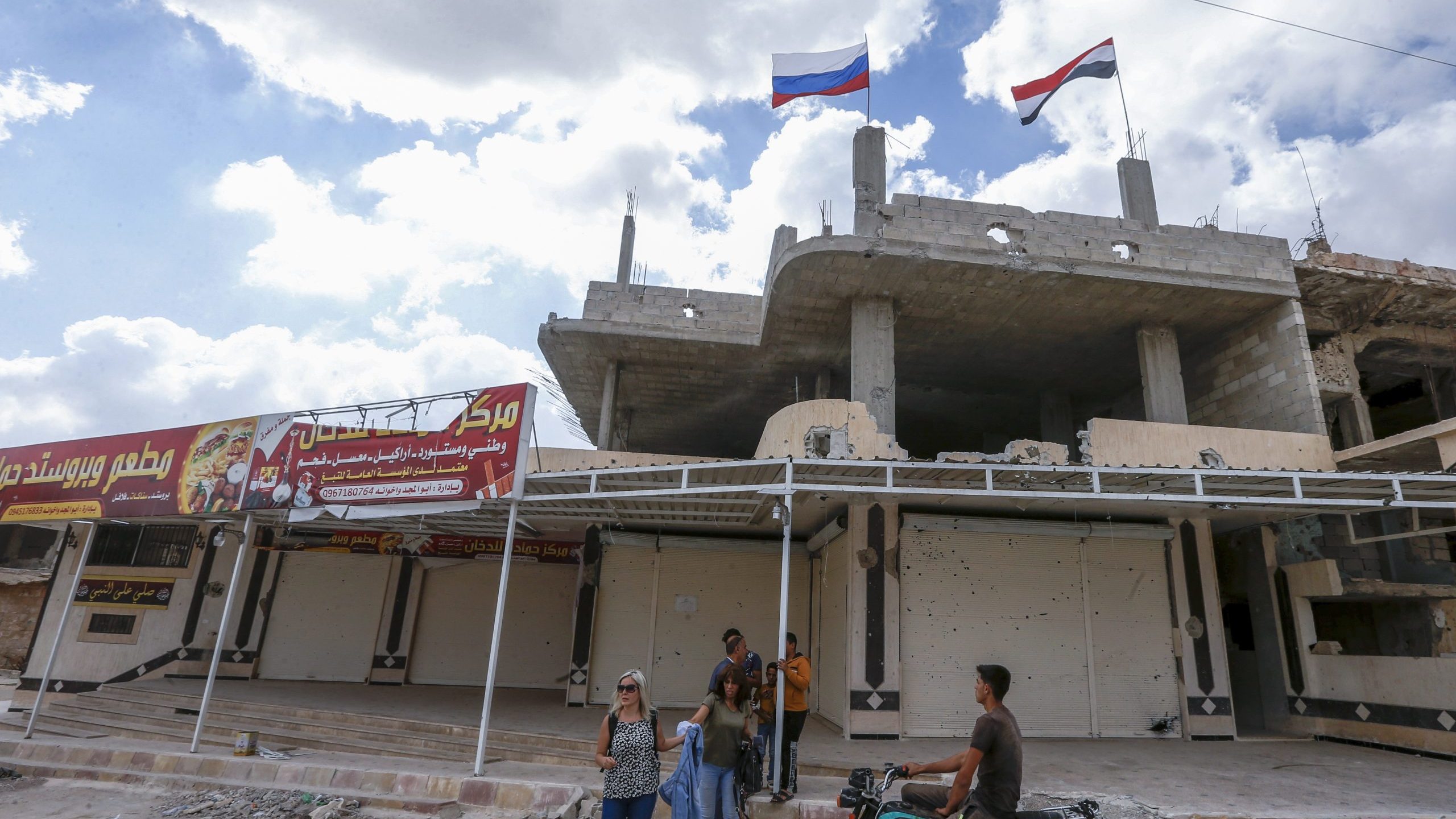Increasing Russian movements in Syria raise questions about its intentions and significance. These movements range from military exercises in Suweida, to security meetings in Raqqa, and from there to an effort to recruit new fighters who follow the Russian vision in Palmyra and the eastern countryside of Homs.
The Russian-Israeli rapprochement that paved the way for Israeli missiles to strike Iran in Syria may also be a form of Russian movement that may fall within the framework of Iranian influence, or even fall within the framework of consolidating and expanding Russian influence in Syria.
Recruitment offices for Moscow
As part of Moscow’s failure to provide any steps that would weaken Iranian influence in Syria, it recently opened offices in several areas, particularly in Palmyra and the central regions. This comes with the aim of attracting the people of Palmyra and its surrounding areas and the eastern government of Homs to the Eighth Brigade, which is close to Russian forces.
According to local sources, the Russian forces assigned people to communicate with the people of Palmyra who live in the areas of Turkish influence in northern Syria, and to provide guarantees and temptations for them to return to it and join the brigade.
Attracting Iranian militiamen
According to the writer and researcher in Russian affairs, Samer Elias, the rivalry between Russia and Iran has begun to take on a different character in Syria recently, as “the relationship between Russia and Iran in Syria is complex, both sides have contributed mainly to saving the regime, and helped each other. However, it seems clear that there is competition between them, in several areas.”
Read Also: Recap: Civilians Under Fire After Escalation in Idleb
“The Russian side is concerned with significantly reducing the Iranian military presence in the southern regions, which is represented by the military operation in the south, in the Suweida governorate in particular. Suweida is in the southern region and is a gateway to the Syrian Badia, therefore it helps Russians cut off any possibility of transferring weapons through the southern regions of Iraq to Syria” Elias told Hal Net.
“With regard to the areas of eastern Homs and Palmyra, there is competition as well between Iranians and Russians to control this area. It is a key area for central Syria that can also form part of the road to Iraq and Lebanon through Syrian territory,” he said.
“On the other hand, there is competition for human resources and the recruitment of Syrians in these areas, such as in Deir-ez-Zor and al-Boukamal. The Russian side wants to have control on this issue, and be in control of the militias made up of Syrians. The Russians need the support of the fighters due to the continued activity of ISIS, and Russia is not willing to include Iranian militias in this matter.”
On Monday, the Russian army announced that its units supervised a “comprehensive tactical maneuver” conducted by the Syrian army in the governorate of Suweida, in southwestern Syria.
“We used units from a tactical group, a mixed tactical group of Syrian forces and a mixed artillery group, consisting of multiple missile launch systems, as well as tank sub-units,” said Alexei Zakharov, representative of Russian forces in Syria.
Zakharov added that government forces “effectively performed the maneuver.” He noted that “Syrian comrades have been assessed as good and excellent,” Russia’s Novosti news agency reported.
Recently, Russia’s efforts to remove Iran from the Syrian arena have emerged, especially when sources talked about Russia preventing the activation of anti-aircraft missiles when Israel bombed Iranian militia sites and equipment in the port of Lattakia.
From the Desert of Iraq to the Syrian Desert
The Russians appear to be disturbed by Iran’s methodology in Syria. Press reports indicate that Iranian-backed forces have used their control of border crossings between Iraq and Syria to bring human and logistical resources to their forces. They also exploit the desert areas to build headquarters there, as is happening in Iraq.
Since the beginning of 2011, Iran has used different approaches to increase its military and security influence in Syria. The first approach was through direct action by recruiting foreign forces loyal to them and recruiting local soldiers. Its main objective was to integrate its forces into the Syrian army and its security branches, to give them legal status in Syria to protect them against possible Israeli or U.S. airstrikes.
According to analysts, the spread of Iranian influence in Syria has become incompatible with the Russian forces -although not in a quick or obvious way.
This article was edited and translated by The Syrian Observer. The Syrian Observer has not verified the content of this story. Responsibility for the information and views set out in this article lies entirely with the author.


